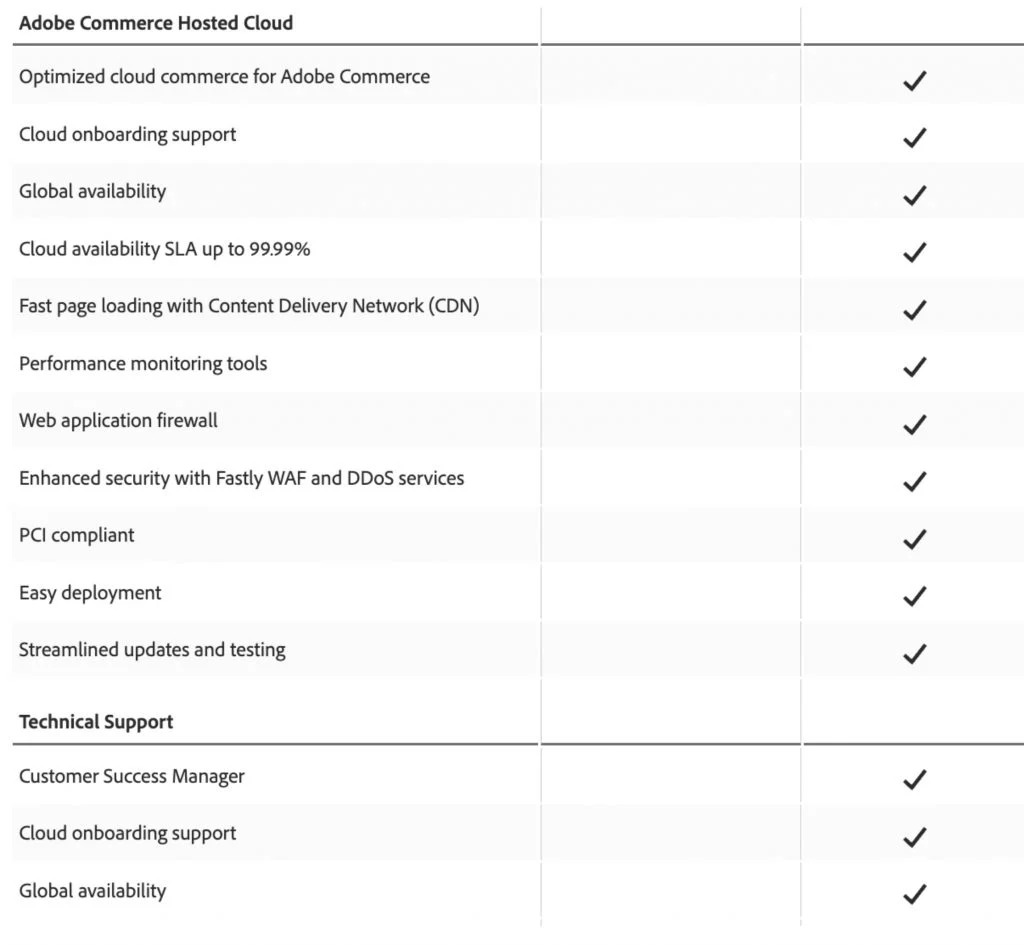- Magento 2 Open Source
- Adobe Commerce
- Magento 2 Commerce vs Magento Open Source in Detail
- Who Needs Magento Open Source?
- Who Needs Adobe Commerce?
Magento 2 Open Source
Magento 2 Open Source, formerly known as Magento Community Edition (CE), is a free and open-source platform that offers essential e-commerce features for businesses of all sizes. It has long been a popular choice for small and midsize businesses (SMBs) looking for a feature-rich and customizable platform to compete with big names in the industry.
With Magento Open Source, you can create a unique online store from scratch and take advantage of its extensive capabilities. However, if your business requires a fully functional solution with additional add-ons and extensions, the Adobe Commerce edition may be more suitable.
Adobe Commerce
Formerly known as Magento Enterprise Edition (EE), Adobe Commerce is designed for large enterprises with a focus on providing high-quality customer service and a wide range of advanced features and functionalities for their online stores. It is a paid version, with a license fee that starts at $24,000 per year, and it allows customers to choose between on-premise deployment and a cloud-based solution.
Magento 2 Commerce vs Magento Open Source in Detail
The main difference between Magento Open Source and Adobe Commerce is that Open Source is distributed for free. Adobe Commerce, on the other hand, is a premium, paid-for option. It includes a long list of features and functionalities to build yourself with the Open Source edition.
Let’s compare the two options by looking at the following parameters:
- Cost
- Scalability
- Security
- Features
Cost Comparison
As mentioned above, Magento Open Source is complimentary, while Adobe Commerce has a license fee. The license fee is a percentage of your total annual revenue.
However, due to the pricing model for Adobe Commerce, this is primarily true once your store reaches an inevitable turnover. You must still pay the minimum license fee if your revenue is low. In such a case, the minimum license fee cost could be too high for your business. The free platform may be a better fit if you don’t foresee rapid growth that motivates investment in the paid version.
Scalability
If you’re anticipating rapid growth, it’s a good idea to go with Adobe Commerce from the start. If you opt for the free version, you risk being held back and slowed down by having to build each component of your growth journey.
Security
From a security perspective, Adobe Commerce is considerably more robust than Magento Open Source. Open Source needs credit card tokenization and advanced payment security, which can be problematic since these features are required for secured transactions. Another big issue with the free version is that it needs to comply with PCI DSS security.
Adobe Commerce offers more advanced security solutions. The paid version is “PCI compliant” and has the Magento Secure Payment Bridge for handling card processing. The paid edition also has bug bounty programs, a regular scanning process, and secured payment gateways like PayPal, WorldPay, CyberSource, Authorize.net, and more. Additionally, Action Logs in Adobe Commerce ensure every change made by users with access to the admin panel is recorded and stored.
The Cloud supplies CDN, DDoS protection, and the Fastly Web Application Firewall. Upgrading to the pro version provides additional security features such as New Relic infrastructure and logs and a dedicated technical advisor.
Main features
Take a look at the image below describing the list of Adobe Commerce vs Magento Open Source features so that the differences between the two editions will be more apparent.

There is a certain set of completely identical features for these two platforms, but there are also certain specific features in Adobe Commerce. Here are the basic functionalities available in both Magento Open Source and Adobe Commerce.
Who Needs Magento Open Source?
If you’re new to e-commerce and on a tight budget, Magento Open Source is definitely for you. It will provide your start-up business with a solid form at a relatively low cost if you understand that any additional features would cost you extra money.
One-product e-commerce websites. If your online store sells one product or several, but they do not require customization, then the basic functionality of Magento Open Source will be enough for you.
Who Needs Adobe Commerce?
Small business e-commerce (SMB) and enterprise e-commerce stores. You can use Adobe Commerce for these online stores, as you will get a broader range of features and better security, which will help you better automate, optimize, and scale your online business.
Summing up the differences between Magento Open Source and Adobe Commerce, we can say one thing for sure: to choose the right platform, you need to understand the specifics of your business, determine its functional components, and understand what results you want to get in the end after developing an online solution.
GET IN TOUCH
